Hisense U7G 55-inch 4K ULED TV (55U7G) review: A Goldilocks 4K TV
The 55-inch Hisense U7G is a right-sized, full-featured 4K TV at an affordable price

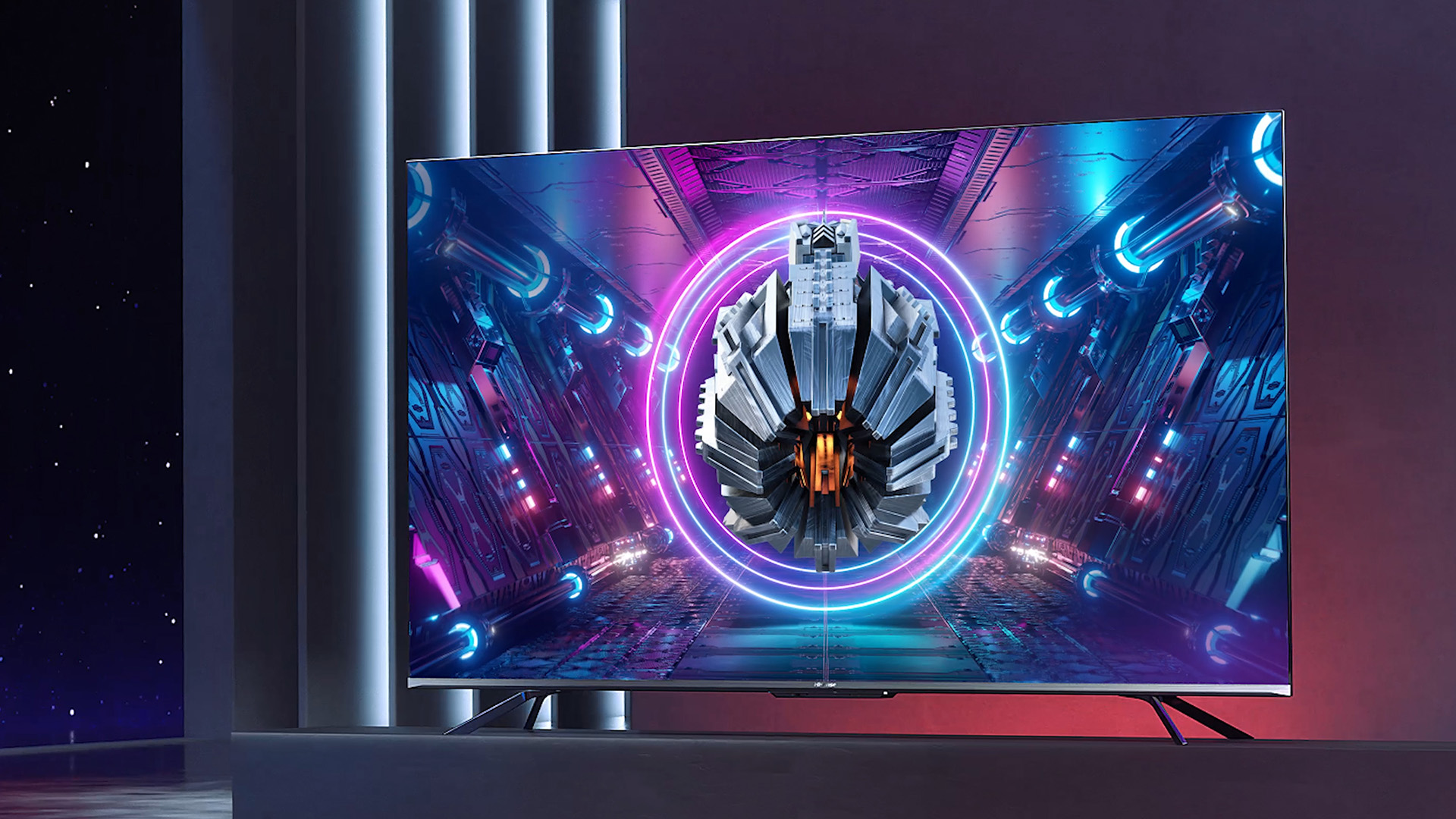
If you're looking for a solid 4K screen at a reasonable price, the Hisense U7G is a great option. While it has its limits, it has a lot of features for the money, including 120Hz and Dolby Vision.
-
+
Full-featured 4K
-
+
Bright picture
-
+
Android TV smarts
-
-
Mediocre sound
Why you can trust T3

It almost seems like a misnomer to call Hisense's 55-inch U7G TV a bargain model. It's got the smarts, features and performance usually found in the best TV sets costing hundreds more.
The Hisense U7G 4K ULED TV supports all the critical video standards for Ultra HD sets and performs surprisingly well for a model that costs just $650. In my testing, the U7G delivered an impressively bright and detailed picture, which compared favorably against similarly sized and priced models from TCL and Vizio that I've recently tested. Yes, OLED sets from the likes of LG offer more intense images, but those sets also cost $450 or more than the Hisense U7G.
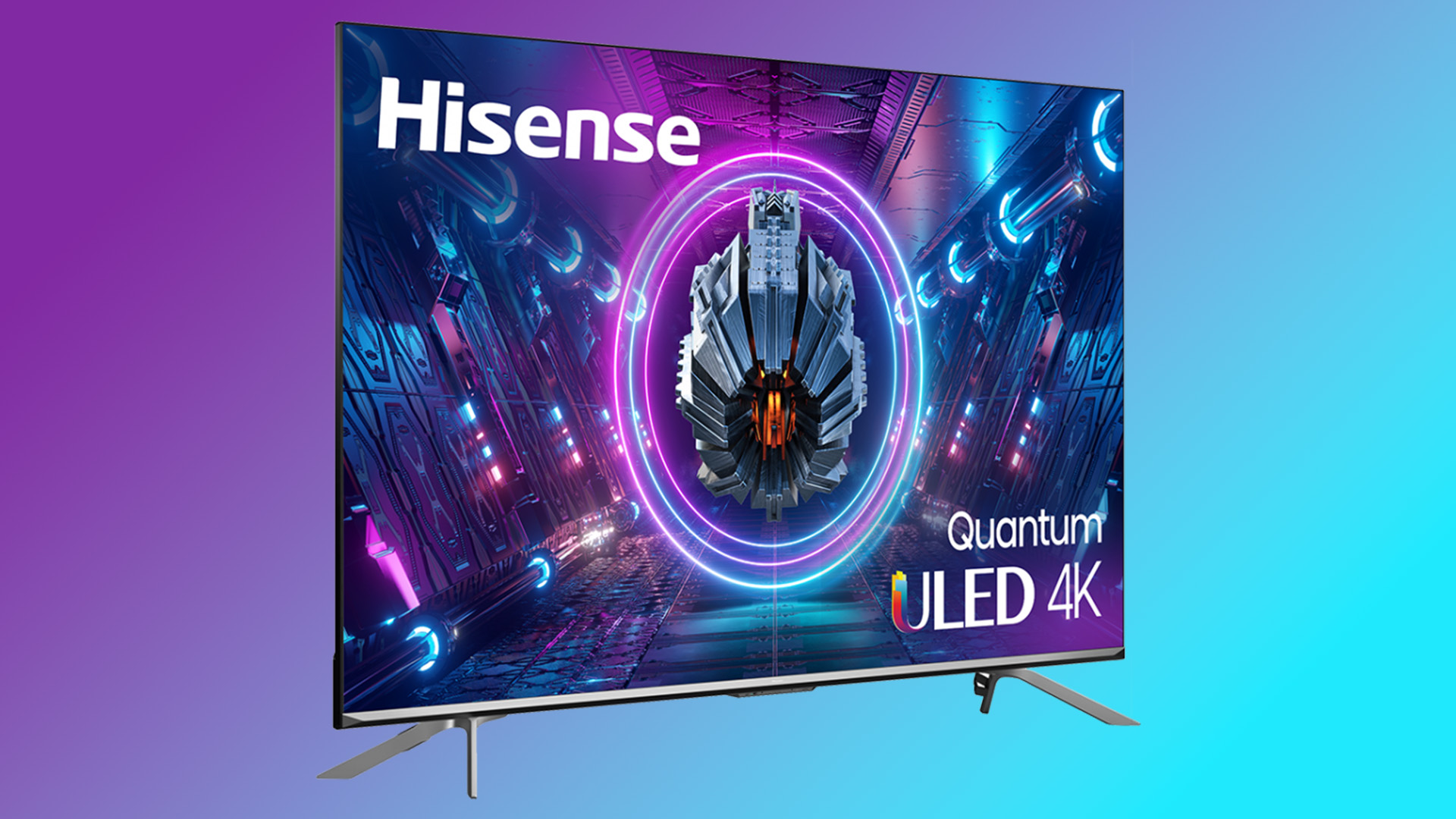
Hisense U7G 55-inch 4K ULED TV (55U7G) review: price and features
For many TV shoppers, the Hisense U7G is the Goldilocks of TVs. At 55-inches, it's suitable for apartment dwellers or those with more modest living rooms, and its full list of 4K (3,840 by 2,160 pixels) features makes this TV right for movie lovers and gamers alike.
Somewhat confusingly branded as a ULED set, the Hisense U7G is an LCD panel that uses a quantum dot layer to produce more colors and a full-array LED backlight with 72 dimming zones to improve contrast without diminishing picture details. It is based on a 120-Hz native panel (versus slower bargain-basement 60-Hz panels), so it produces a solid picture, and the U7G supports all the important 4K picture standards including high dynamic range color formats like Dolby Vision IQ, HDR10, HDR10+, and HLG (hybrid log gamma for streaming and broadcast programs).
For smarts and managing streaming sources, the Hisense U7G uses Google's Android TV software. It's not as streamlined or as simple to master as Roku's software, but it supports all the major streaming programming sources.
The 55-inch U7G has a list price of $849.99 but is readily available for just $649.99 online. You can also get the larger 65-inch and 75-inch models for $798 and $1098 respectively if you want something a little bigger. This model is not available in the UK or Australia.

Hisense U7G 55-inch 4K ULED TV (55U7G) review: picture performance
Get all the latest news, reviews, deals and buying guides on gorgeous tech, home and active products from the T3 experts
To select your picture preferences, the Hisense U7G has eight different preset modes: Vivid, Standard, Energy Saving, Game, Sport, Theater Day, Theater Night, and Filmmaker. The last mode is for purists (people like me) who don't want excessive video processing to interfere with or mar the original look and feel of a movie intended by the director. Of course, if you're still not satisfied, you can go into more advanced settings and even adjust elements like the backlighting.
In my tests, I primarily relied on the Hisense U7G's Theater Night picture mode. Filmmaker mode turned off the set's noise reduction and yielded the most accurate colors, but the black borders on letterboxed material tended to look a bit grey. For deeper blacks, I found the Theater Night mode was preferable.
Overall, the Hisense U7G delivered very naturalistic colors; verdant lawns were suitably green, clear skies were appropriately blue, and the Fab Four looked genuinely pasty-faced as they worked out the details of songs in Get Back. I also found I could be less concerned about getting the prime spot on the couch as the U7G's horizontal off-axis viewing was quite satisfactory — a major improvement over sets in this price range of just a few years ago.
For 4K content, I found the Hisense U7G delivered better than average picture performance. Darker corners and shadowy elements were detailed without losing contrast, even in challenging scenes such as when Boba Fett extracts himself from the digestive tract of the sarlacc. I also didn't witness any appreciable banding in the 4K skies of alien planets or see any blocky pixelation in exoplanet dust storms. Bright objects in scenes, which can often produce an artificial glow around them when seen against dark backgrounds, didn't produce problem halo effects here either.
A considerable amount of video programming is not in 4K, of course, but the Hisense U7G did very well handling standard HD content. In Apocalypse Now, the heat-stroke-inducing sun of the delta, sweaty jungle details, and smoke wafting up from a soldier's Marlboro were all upscaled well by the U7G. And even a 720p version of Jurassic World looked good on the U7G TV with no major artifacts appearing in a fast-paced, pugilistic dinosaur scene.
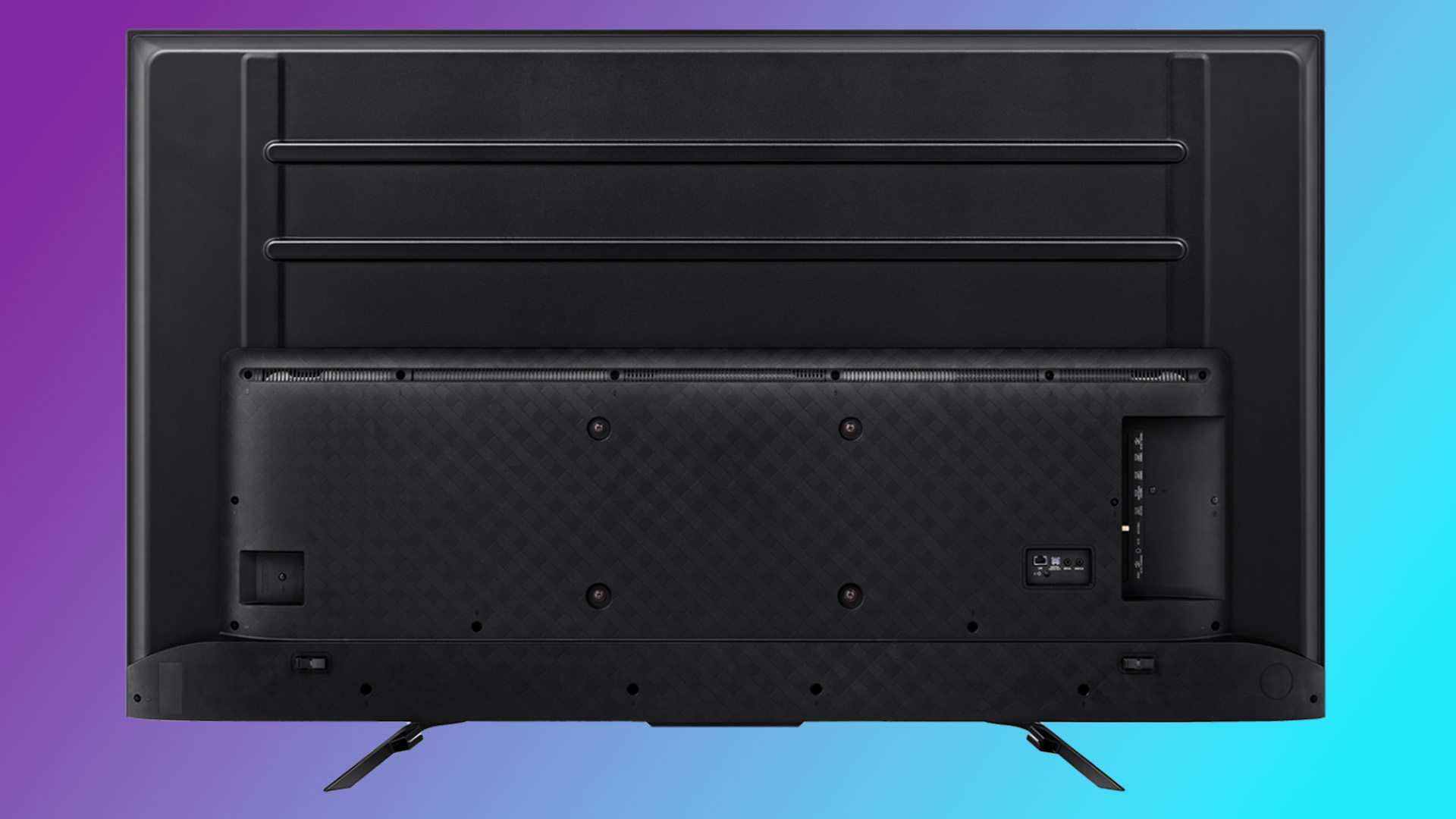
Hisense U7G 55-inch 4K ULED TV (55U7G) review: sound quality
Acute listeners will find the built-in audio of the Hisense U7G unexceptional. The set supports Dolby Atmos soundtracks and has six audio preset modes: standard, theater, sports, music, speech, and late night. The last mode compresses the dynamic range so that sudden explosions or gunplay in shows doesn't wake the neighbors after hours.
Not that there's much bass to worry about. I noticed that music in particular suffered from a lack of lower frequencies. Paul sounded too tiny in Get Back, and the audio felt too focused at the center of the screen. Theater mode puts an additional emphasis on higher-end frequencies and pushes the sound stage out to the side. Overproduced pop music tends to retain its lead vocal and guitar components, but if you like subwoofer-style bass, the Hisense U7G will disappoint.
On the other hand, this set delivers reasonable sound pressure levels. There's enough volume to fill a large living room. I cranked up the volume to about 50 percent — the loudest my delicate ears could endure — without experiencing severe distortion and with only a touch of clipping.
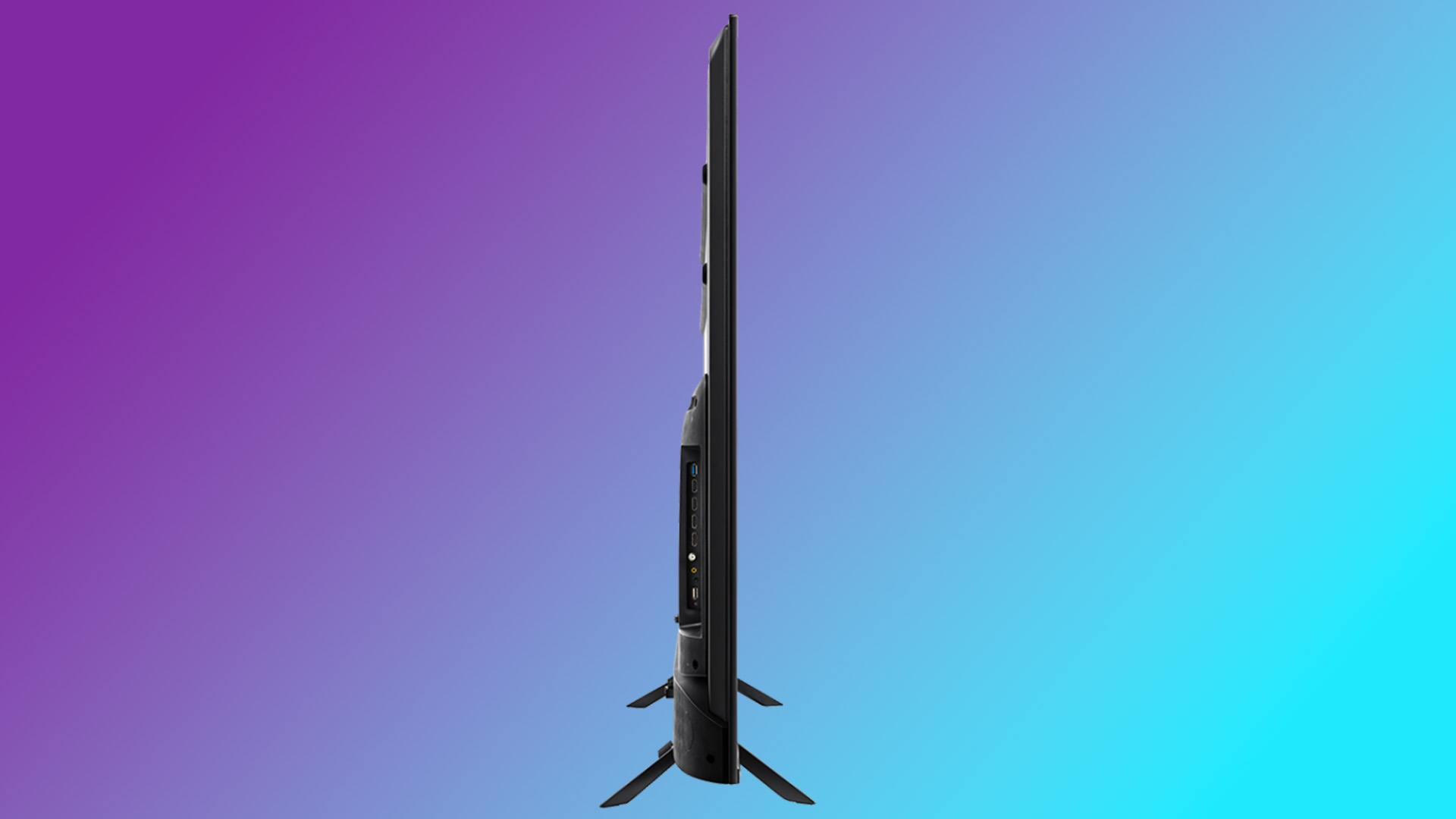
Hisense U7G 55-inch 4K ULED TV (55U7G) review: design and usability
The Hisense U7G features a conventional design with splayed legs whose stanchions insert into either side of the set, producing a stable base for tabletop situations. Better still, the legs can only be attached one way, so there's no danger of putting the wrong support on the wrong end if you're doing it yourself. The U7G is 2.7 inches at its thickest point, with a half-inch bezel around the screen, and it sits roughly 2.5 inches high perched on its legs. On the rear of the set and along each leg of the TV are clips to run cables down from the back and make them look as inconspicuous as possible.
To make the needed connections, the Hisense U7G has four HDMI ports (two of which support 120 Hz video and one that supports eArc soundbars). There are also two USB ports, an Ethernet port, a digital optical audio output, a mini audio output jack and coaxial cable input. The TV also has a single AV input that uses a supplied adapter for connecting sources like ancient analog VCRs.
Since the Hisense U7G uses Google's Android TV software, if you're an Android smartphone user you can transfer your phone's Wi-Fi settings and Google account information directly to the TV. Very convenient, indeed. The Android system will also automatically install a slew of the most popular apps, like Hulu and Netflix. Best of all, you can use standard Google Assistant voice commands — even when the TV is turned off — via a microphone built into the TV. Just say, “Hey, Google, find all the Star Wars movies,” and a list of titles on different services appears. You can also check things like the weather forecast and news headlines.
Concerned about privacy? You can turn off the microphone using a physical switch just below the bottom of the screen.
Android TV has come a long way since its inception, and it’s just as capable and cleaned up as most of the competition, principally from Roku. It presents you with a scrolling vertical list of services and apps on screen, with featured movies along the top. Fortunately, Google seems to have gotten away from its earlier blatant self-promotion (unlike Amazon's FireTV interface), and many searches produce listings where Amazon video rental results appear ahead of Google's own offerings.
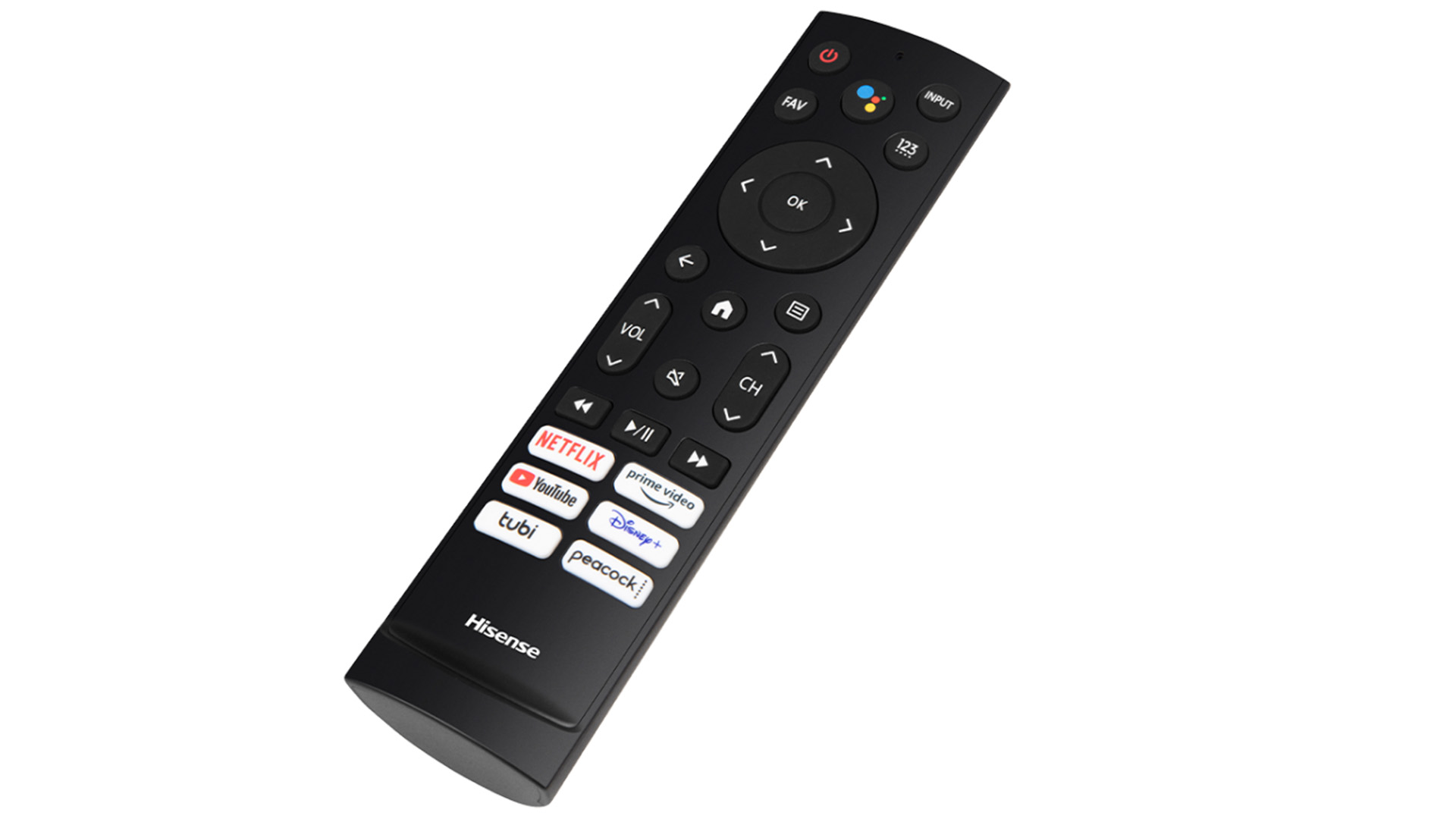
Hisense U7G 55-inch 4K ULED TV (55U7G) review: verdict
Suffice it to say, I was pleasantly surprised by the performance and capabilities of the Hisense 55-inch U7G 4K TV. It handled a variety of content and programming with aplomb. Movies in 4K should satisfy budget-conscious cinéastes, while those focused on streaming and broadcast TV won’t find any reason to complain. And the price point for a set of this caliber is a reason many shoppers should consider the Hisense U7G when making their purchasing decision.
Also consider
There are many bargain sets available at this price level, or lower. But few can match the Hisense U7G's feature set and performance. However, there are a couple of competing models to consider. TCL's 55-inch 6-Series 4K set delivers a solid picture using a mini-LED backlighting scheme and Roku smart TV software for about $50 more. Also, if you're looking to save money, there’s the Vizio M-Series Quantum MQ7, which costs about $100 less than the Hisense U7G but uses a less capable 60-Hz panel and Vizio's own more limited smart TV software.

John R. Quain has covered science and technology for more than two decades. In addition to being a contributor at T3, he is a contributing editor at Tom's Guide, a regular contributor to The New York Times and the weekly tech guru for WTVN. His articles have appeared in Car & Driver, Esquire, Fast Company, Rolling Stone, and U.S. News & World Report, as well as numerous technology publications. Quain was the recipient of a Paris Accords of Science Communication fellowship in 2019. He regularly speaks about issues relating to autonomous vehicles and is the Editor-in-Chief of OntheRoadtoAutonomy.com. You can follow him on Twitter @jqontech